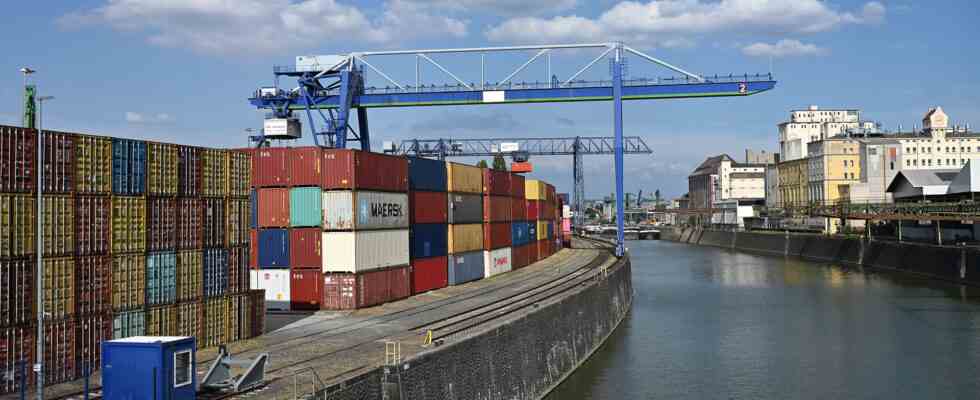Status: 05.01.2023 09:21 am
German exporters suffered a setback in November. Contrary to expectations, exports fell slightly. In particular, business with the USA and China was worse.
German exports surprisingly fell in November due to lower demand from the EU, the USA and China. Exports shrank by 0.3 percent compared to the previous month to 135.1 billion euros, as the Federal Statistical Office announced today. Economists surveyed by Reuters, on the other hand, had expected slight growth of 0.2 percent. In November, imports fell for the third month in a row and at 3.3 percent, the sharpest since January 2022.
“‘Made in Germany’ no longer a driving force”
“At the high level, the slight drop in exports is easily manageable,” said Alexander Krüger, chief economist at Hauck Aufhäuser Lampe Privatbank. “Since China and the USA are weakening, the export dynamics will remain rather subdued for the time being.” A ray of hope comes from reduced material bottlenecks. Overall, the export sector supports the prospect of only a mild recession in Germany.
Exports to the member states of the European Union (EU) fell by 0.4 percent to 73.0 billion euros in November. Business with the most important customer, the USA, even shrank by 1.5 percent to 13.7 billion euros. Exports to the People’s Republic of China also fell by 1.5 percent and totaled 8.8 billion euros. On the other hand, exports to Great Britain increased by 16.1 percent to 7.4 billion euros. Deliveries to Russia grew by 12.3 percent on the previous month to 1.1 billion euros.
“‘Made in Germany’ is no longer a driving force in times of a weaker global economy,” emphasized Thomas Gitzel, Chief Economist at VP Bank. However, price effects also played a role in the decline in exports. “Since prices fell in the final quarter, particularly in the area of raw materials, German exporters are unlikely to have pushed through their desired prices as well as was the case in the months before,” explained the expert.
Concerned look at China
Meanwhile, the statistical office subsequently corrected the October result upwards: a decline of 0.6 percent turned into growth of 0.8 percent. From January to November 2022, exports increased by a total of 15.0 percent to 1435.3 billion euros. According to a survey by the ifo Institute, the German export industry was recently cautiously optimistic again. The expectations of the surveyed companies rose to plus 1.6 points in December, from plus 0.9 points in November.
In the new year, however, the German economy is not expecting any major leaps. “Exports will not slump in 2023, but we cannot expect a boom either,” Dirk Jandura, President of the Federal Association of Wholesale, Foreign Trade, Services (BGA), recently told Reuters. “It would be a success if we actually managed to break even.”
China in particular is causing concern. Turning away from the zero-Covid policy will help in the medium term, but initially the sick leave threatens to go through the roof. “If there were a large wave of infections, China would weaken economically,” said Jandura. “I fear the worst if the pandemic hits as feared.” According to experts, the world’s second largest economy is threatened by a gigantic corona wave with hundreds of millions of people infected within weeks.

